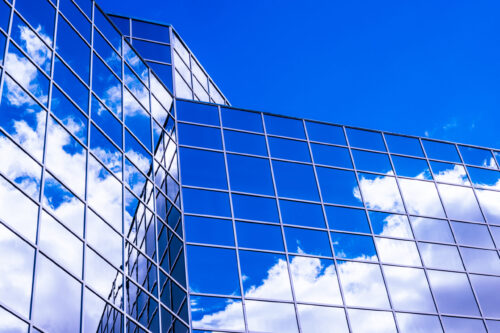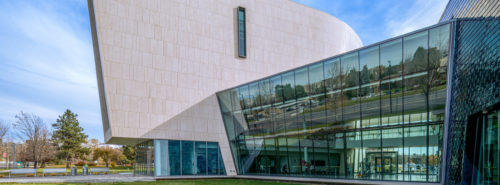The demands of mixed-use facilities: sustainable buildings/energy efficiency
Mixed-use facilities require engineers to handle several complex components. Here, engineers with experience on such facilities offer advice on bringing successful execution into the mix with sustainable buildings/ energy efficiency.
Respondents
Timothy Chatterton, PE, Project Manager, RMF Engineering, Selbyville, Del.
Kari Engen, PE, CxA, LEED AP, Senior Mechanical Engineer, WD Partners, Dublin, Ohio
Taner Tekin, PE, LEED AP, Project Manager, exp, Maitland, Fla.
John Torre, PE, LEED AP, Principal in Charge of Electrical Engineering Services, OLA Consulting Engineers, Hawthorne, N.Y.
Scott Vollmoeller, PE, LEED AP BD+C, Associate DBIA, Managing Principal, Glumac, Seattle
CSE: Energy efficiency and sustainability are often a request from building owners and CIOs. What net zero energy and/or high-performance systems have you recently specified on mixed-use projects (either an existing building or new construction)?
Engen: A recent project involved the use of geo-exchange for cooling and heating systems, in which HVAC systems were a combination of water-source heat pumps for space temperature control, water-to-water heat pumps for generating low-temperature hot water and chilled water to dedicated outdoor air handling units, and solar domestic water-heating systems for a recreational/workout facility within the same building.
Tekin: Photovoltaics (PVs), trigeneration, geothermal, rainwater harvesting, wind turbines, heat recovery, dynamic glass, and microgrids are some of the technologies that our sustainability team has been implementing on projects.
CSE: Many aspects of sustainability (power, HVAC, etc.) require the building facility team to follow certain practices to be effective. What, if anything, can an engineer do to help increase chances of success in this area?
Engen: The engineer must work early in the process to educate the owner and the team regarding sustainable practices and the value of commissioning throughout the process. Testing of systems, understanding the owner’s project requirements, and ongoing monitoring of system function all help to achieve sustainability goals throughout the life of a building, not just during the project phase.
Tekin: First of all, the engineer should understand the capabilities and preferences of the facilities team. Then, find out if the facilities team has the manpower to maintain complex systems, such as trigeneration with absorbers, etc. If not, the engineer should stick with simpler solutions, such as an improved envelope.
Vollmoeller: While a standard, subcontractor-provided training agenda will cover the material provided in the equipment operations and maintenance documents, having a commissioning authority develop a training program and documentation that focuses on system-level operations can provide a broader overview of optimal system operation. This can be accomplished through training on the documentation developed during the commissioning process or by including the facilities team in the commissioning functional testing process as a training tool.
CSE: What types of renewable or alternative energy systems have you recently specified to provide power for such projects? This may include PVs, wind turbines, etc. Describe the challenges and solutions.
Tekin: PVs, wind turbines, and generators/microturbines. PV has gotten much easier, with the first cost decreasing in the past few years. Building integrated wind turbines are a little more difficult, as vendors seem to go into and out of business. The biggest challenge with generators and microturbines is whether or not the owner can actually maintain the power generation, associated absorbers, etc. Certain utilities are also more difficult than others to go off the grid.
Engen: I have been part of a team designing a PV system for a small percentage of the building’s electrical load. Challenges associated with this strategy included allowing square footage for implementation. The roof was not used for the collectors, and as such, some site space was sacrificed for the installation of the panels. This created some coordination issues to resolve with other utilities entering the building.
CSE: What types of water reuse or conservation systems have you specified into mixed-use facilities? Describe their performance and savings over the course of 1 year.
Engen: Water conservation has been commonplace for some time. Due to advances in water-conserving plumbing fixtures, the specification of low-flush toilets and flushless urinals is an easy solution to reduce water consumption. Water-reuse systems have been challenging to implement in some jurisdictions that are hesitant to allow untreated or marginally treated water into the building footprint. Early collaboration with stakeholders at the utility is critical prior to pursuing water-reuse strategies.
Tekin: Rainwater, greywater, and condensate reuse systems. Most of these have worked well and have achieved water savings in the range of 80% to 90% over a typical building when combined with low-flow fixtures. The key is keeping it simple and helping the owner understand that these are actually simple systems when applied properly.
Do you have experience and expertise with the topics mentioned in this content? You should consider contributing to our CFE Media editorial team and getting the recognition you and your company deserve. Click here to start this process.





